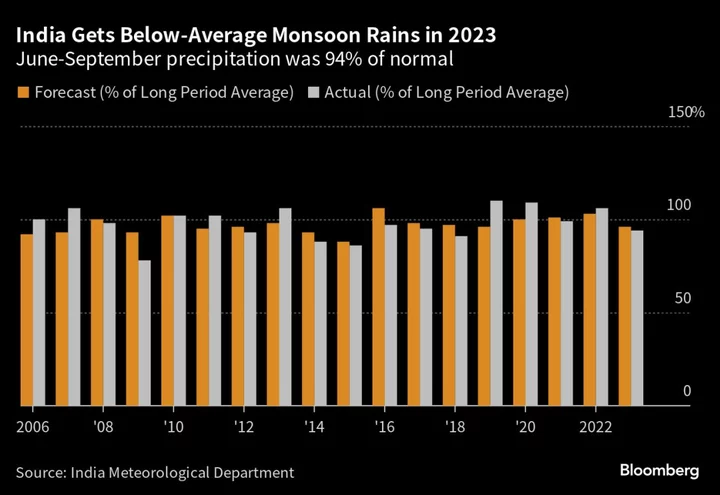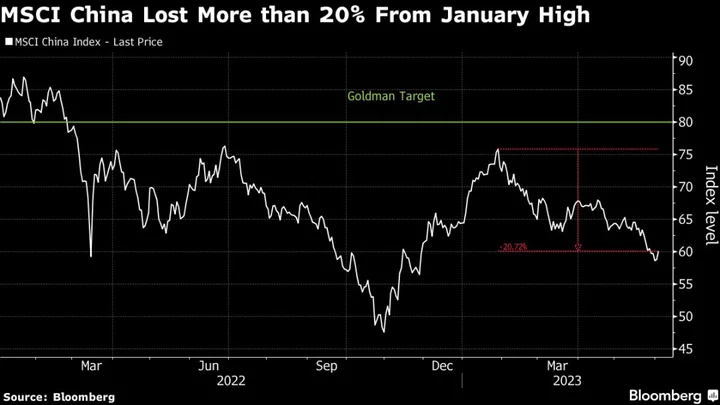India recorded the weakest monsoon rains in five years, increasing the risk to crops in the fields and raising the probability of longer curbs on exports of farm commodities such as sugar, rice and wheat.
The Asian nation, which relies on rains to irrigate about half of its farmland, received 820 millimeters (32.3 inches) of rainfall during the June-September monsoon season, 6% less than the long-term average, according to the India Meteorological Department.
Poor rains have increased worries that India, the second-biggest producer of wheat, rice and sugar, will continue to curb exports of key commodities to manage food inflation before the national election in 2024. Such a move would support global prices. Rice in Asia is near a 15-year high, while sugar in New York has jumped more than 30% this year to trade just below a 12-year peak.
Precipitation in the east and northeast, major rice-growing regions, was 18% below normal during the monsoon, the weather office said. Some parts of Karnataka and Maharashtra states, key sugar producers, were among the driest areas this year, it said.
Even as Food Secretary Sanjeev Chopra is positive on prospects for the sugar cane crop, 12 respondents in a Bloomberg survey of 14 analysts, traders and millers, said that India may not export any sugar in the new season starting on Oct. 1 because of lower production.
Sucden’s General Director Jeremy Austin said last week that the nation is expected to produce 28.6 million tons of sugar in 2023-24, much less than the Indian Sugar Mills Association’s prediction of 31.68 million tons. The country’s estimated production in 2022-23 was 32.8 million tons, according to ISMA.
Although monsoon activity was below-normal this year, rainfall was not impacted much by the El Niño, according to Mrutyunjay Mohapatra, director general of India’s weather bureau. A positive Indian Ocean Dipole — a weather phenomenon that generally brings normal to above-normal rains in the country — compensated the negative impact of El Niño conditions, he said at an online press conference.
A weak El Niño developed in July, but became moderate later, Mohapatra said. The first half of the monsoon season received 10% more precipitation than normal, but rain levels were 17% below average during the August-September period, he said. The El Niño event, which creates an abnormal warming of the Pacific Ocean, tends to lower rainfall during India’s monsoons.
Deficient monsoon rains have also raised concerns about winter crops such as wheat and oilseeds, which generally rely on stored water because of the lack of precipitation during the season from November to March. India’s 150 reservoirs held about 130 billion cubic meters of water as of Friday, 18% less than a year earlier, according to the Central Water Commission.
The risk of lower farm production this year could prompt the government to keep taking aggressive measures to control food inflation, which surged to almost 10% in August from a year earlier. Besides curbing exports of sugar and some grains, the authorities are cracking down on hoarding and selling farm goods from central reserves to cool prices.
--With assistance from Andrew Davis.
(Updates to add comments from IMD head in seventh paragraph)









